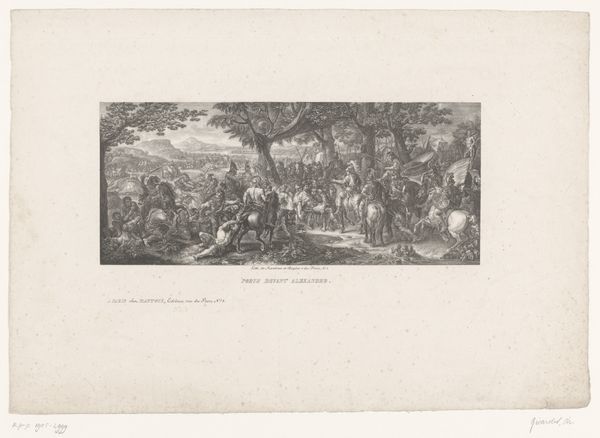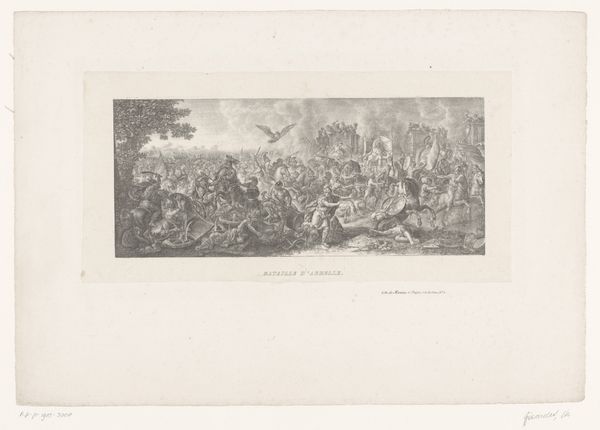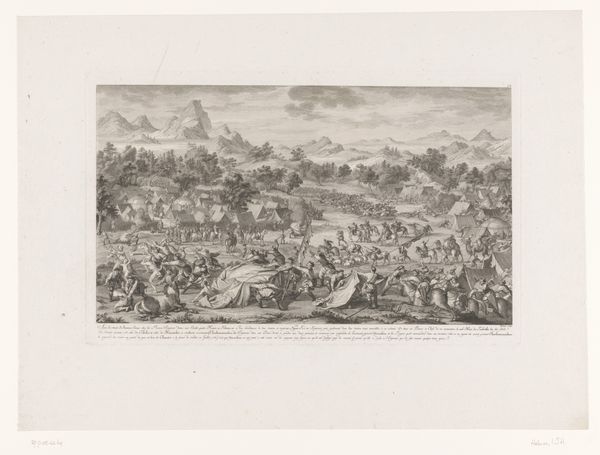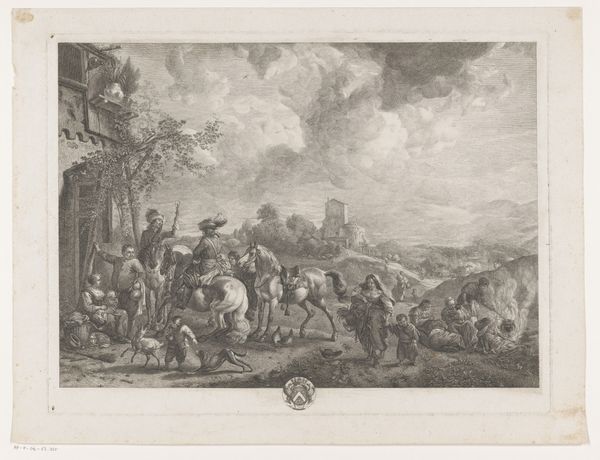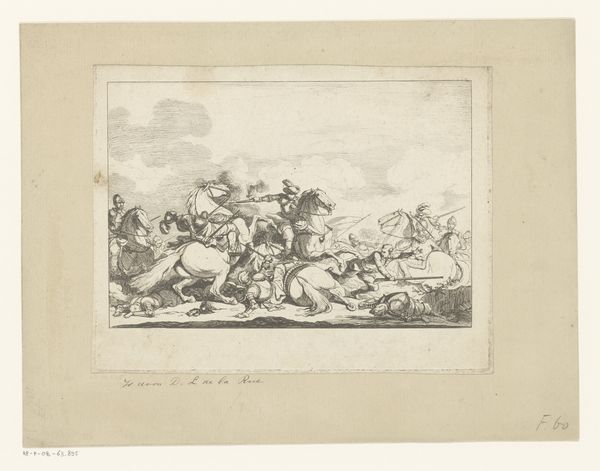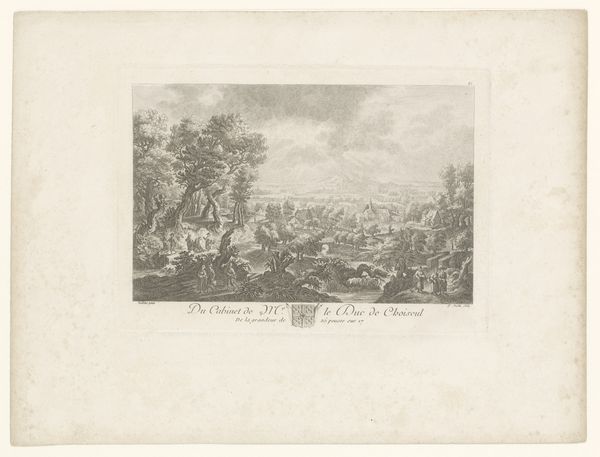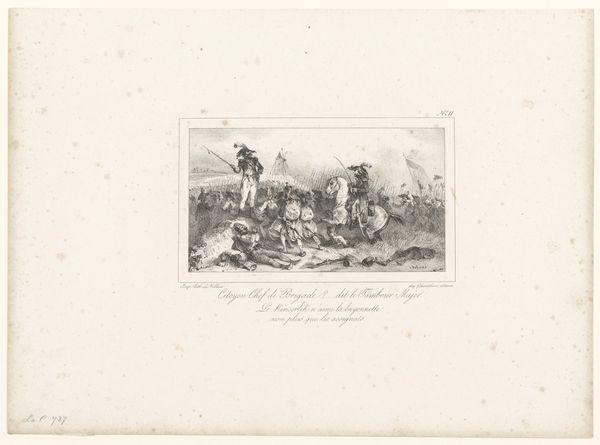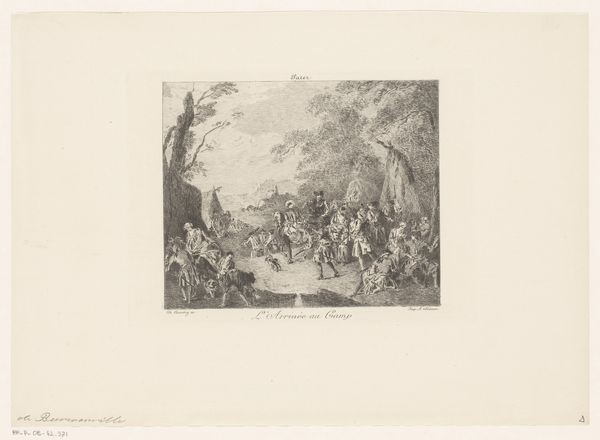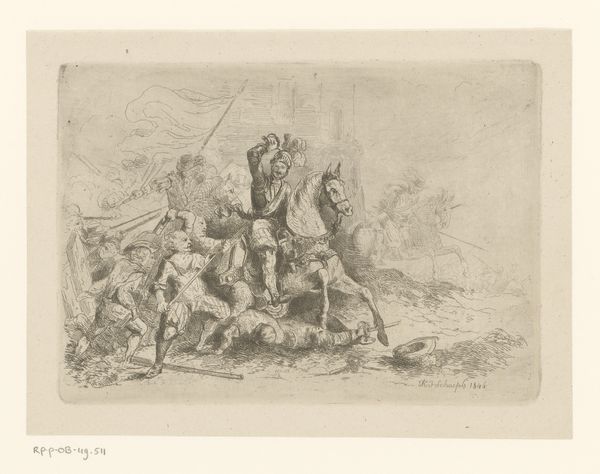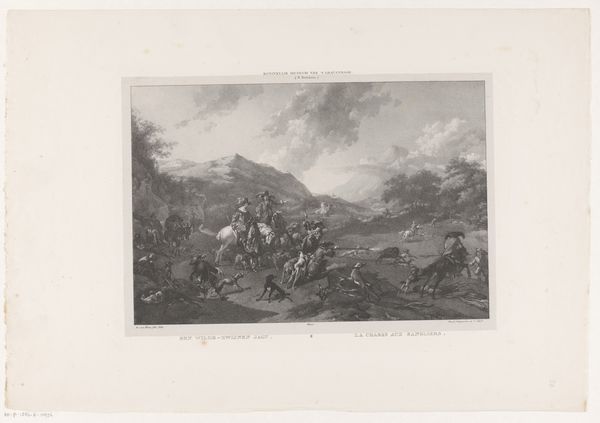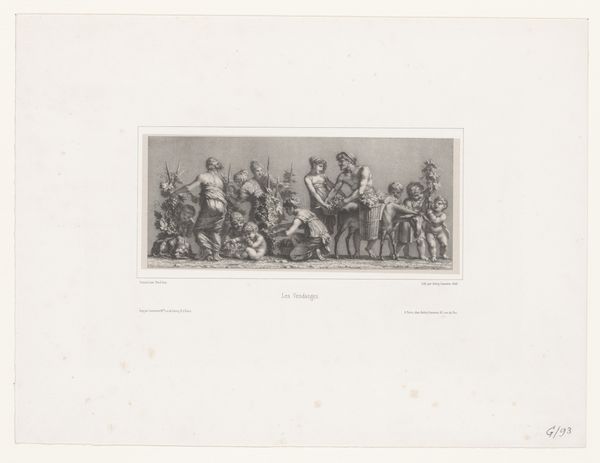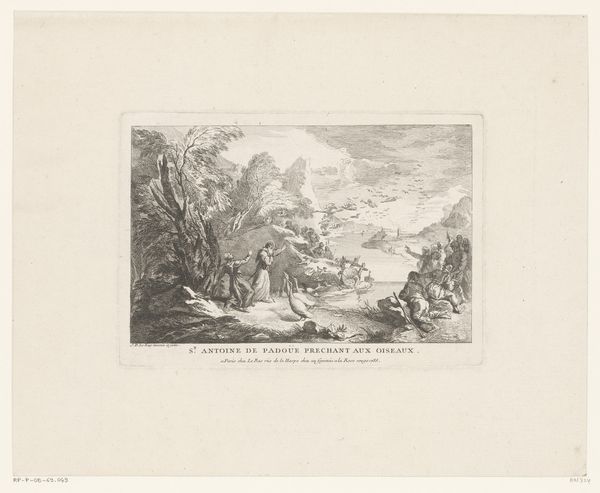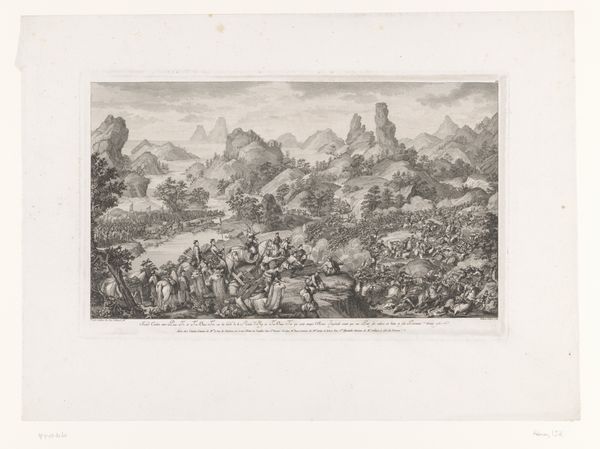
mixed-media, print, paper, ink, engraving
#
mixed-media
# print
#
paper
#
ink
#
romanticism
#
history-painting
#
engraving
Dimensions: height 288 mm, width 415 mm
Copyright: Rijks Museum: Open Domain
Curator: Here we have "Veldslag aan de Granicus," or "Battle at the Granicus," a mixed-media print by Charles Girardet, dating back to about 1837. What springs to mind for you? Editor: Mayhem. Pure, unadulterated mayhem! The density of figures is overwhelming. I'm immediately struck by the labor that went into etching such detail. And the paper it's printed on—did they make that too? Curator: It’s more than just chaotic. Think of the horse as a recurring symbol. Throughout history, it represents nobility, strength, and military might, especially in battle scenes. It also conveys a sense of speed, urgency, even frantic energy as the soldiers converge at the Granicus River. Editor: And speaking of labor, imagine the social context surrounding its production! Was Girardet part of a larger workshop? Were apprentices involved in cranking these prints out? Because the cost of creating and purchasing prints directly reflects broader questions of artistic consumption and historical interpretation at the time. It’s no mere image. Curator: Exactly. The "Battle of the Granicus" carries symbolic weight beyond its immediate visual appeal. The battle itself signifies a major shift in power from Persia to Greece. Remember Alexander the Great as a harbinger of profound, long-term cultural transformation. In prints like these, this battle took on legendary status. Editor: All true! And from a purely materialistic view, notice the lines themselves, the textures achieved with ink on paper... Engraving lends itself to replication, and accessibility for mass consumption—a departure from earlier conventions! The materiality enables distribution and wider circulation of a particular interpretation of the past. Curator: That it does! And isn’t it fascinating how Girardet chose this specific moment in history? Romanticism reveled in grand historical narratives. Editor: Precisely! When we consider what paper mills were active then, the availability of ink...it enriches my appreciation, even if I still mostly see a mass of tangled bodies! Curator: Understanding Girardet's image as a complex cultural object—part spectacle, part commodity, and a potent symbol—gives it staying power. Editor: Agreed. Next time I look at this piece, I'll see both the chaotic battlefield *and* the bustling workshops that reproduced its image for public consumption.
Comments
No comments
Be the first to comment and join the conversation on the ultimate creative platform.
